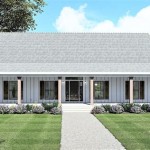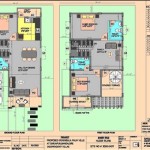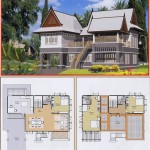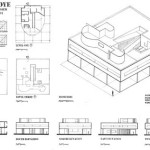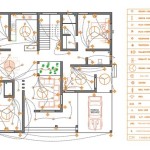Essential Aspects of Floor Plans and Designs for Houses
When designing a house, the floor plan and design play a crucial role in creating a functional and aesthetically pleasing living space. Here are some essential aspects to consider when planning the layout and design of your home:
1. Floor Plan Flow and Functionality
The flow of your floor plan should be seamless and intuitive, allowing for easy movement between rooms. Consider the daily routines and activities of your household to determine the best arrangement of spaces. Ensure that transitions between areas, such as the kitchen to the dining room, are smooth and efficient.
2. Room Size and Proportions
The size and proportions of each room are integral to its functionality and comfort. Determine the appropriate dimensions for bedrooms, bathrooms, living areas, and other spaces based on your needs and the intended use of the room. Avoid creating excessively large or small rooms that lack balance and harmony.
3. Natural Light and Ventilation
Maximize natural light by incorporating windows and skylights into your design. Ample sunlight not only brightens up your home but also reduces energy consumption for lighting. Ensure proper ventilation by providing adequate windows and vents throughout the house to maintain a comfortable indoor climate.
4. Storage and Closets
Incorporate ample storage solutions into your floor plan to keep clutter at bay and maintain a tidy home. Include closets, cabinets, pantries, and built-in shelves in strategic locations to accommodate your belongings and ensure easy access to essentials.
5. Architectural Style and Aesthetics
The architectural style of your home will influence the overall design and aesthetics of the floor plan. Consider your personal preferences and the surrounding neighborhood when choosing a style. Whether you prefer a traditional, modern, or contemporary design, ensure that the floor plan complements the architectural style.
6. Structural Elements and Building Codes
The floor plan should adhere to building codes and structural requirements to ensure the safety and stability of your home. Collaborate with an architect or engineer to determine the necessary load-bearing walls, beams, and other structural elements to support the desired layout.
7. Outdoor Spaces and Landscaping
If applicable, consider how the floor plan integrates with outdoor spaces such as patios, decks, or gardens. Plan access points and transitions between indoor and outdoor areas to create a cohesive and inviting living environment. Landscaping and outdoor elements can complement the architectural design and enhance the overall aesthetic of your home.
Conclusion
Creating a well-designed floor plan for your house requires careful planning and attention to detail. By considering these essential aspects, you can create a functional, comfortable, and aesthetically pleasing living space that meets the specific needs of your household and enhances your overall quality of life.

House Plans How To Design Your Home Plan

House Plans How To Design Your Home Plan

Floor Plans Types Symbols Examples

Small House Plans Popular Designs Layouts

Small House Design Shd 2024007 Pinoy Eplans One Y Bungalow Plans Layout

Top 5 Modern House Plans With Photos Floor Archid

House Plans How To Design Your Home Plan

House Plans How To Design Your Home Plan

How Much Do 3d House Plans Cost Faqs Answered Cedreo

House Plans Home Floor Architecturalhouseplans Com


